Giant sequoias (Sequoiadendron giganteum) are behemoths. These incredible trees are nature’s skyscrapers, the tallest of them rising 275 feet above the forest floor. These trees grow between 5,000-7,000 feet above sea level.
Giant sequoias inspire awe and admiration from the over one million people who visited Sequoia National Park each year.
Largest Single Trees by Volume
Located in 75 groves across the Sierra Nevada Mountains, giant sequoias can grow up to 30 feet in diameter and over 250 tall.
Giant sequoias can be confused with California redwoods (Sequoia sempervirens), also known as coastal redwoods, another impressive tree species.
Free weekly newsletter
Fill out your e-mail address to receive our newsletter!
Both of these trees have a similar, red-orange bark color that differentiates them from the gray-brown pines, firs, and other trees that reside in the mixed conifer forests where giant sequoias reside.
The tallest giant sequoia in the world, nicknamed General Sherman, has a circumference of 102 feet and is 275 feet tall.
Giants of the Forest
Giant sequoias are one of the longest lived tree species, with the oldest giant sequoia living an estimated 3,400 years.
Their incredibly long lives mean that many of these trees have lived through droughts, fires, record snowfall years, and other climate changes that are visible in the tree cores sampled by researchers.
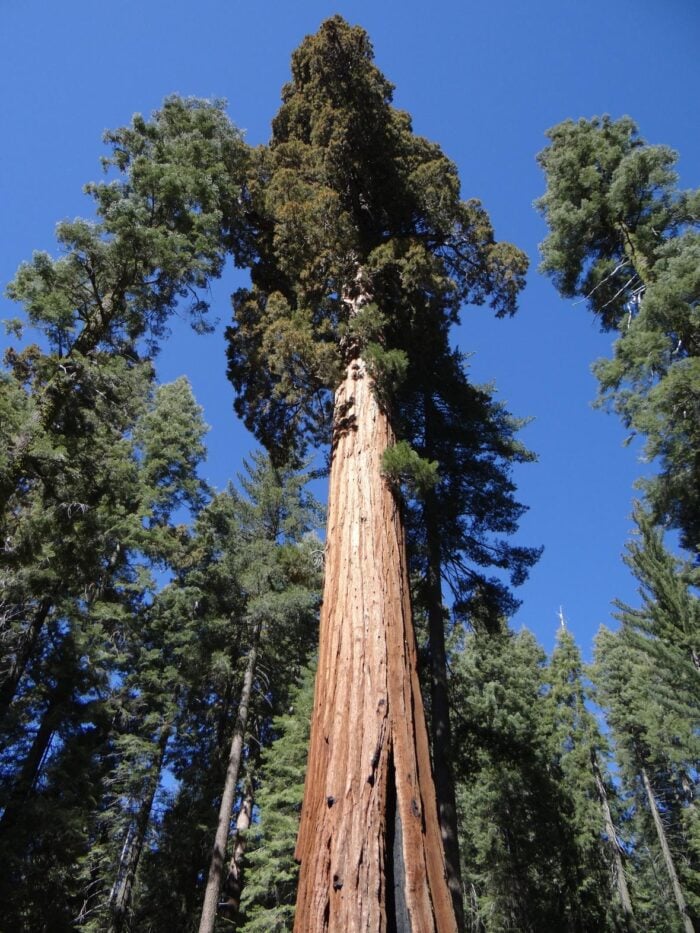
Their thick bark helps giant sequoias adapt to conditions that threaten the survival of other forest species. Giant sequoia bark can be up to 18 inches thick, insulating them from the heat from wildfires that periodically sweep through their forest environments.
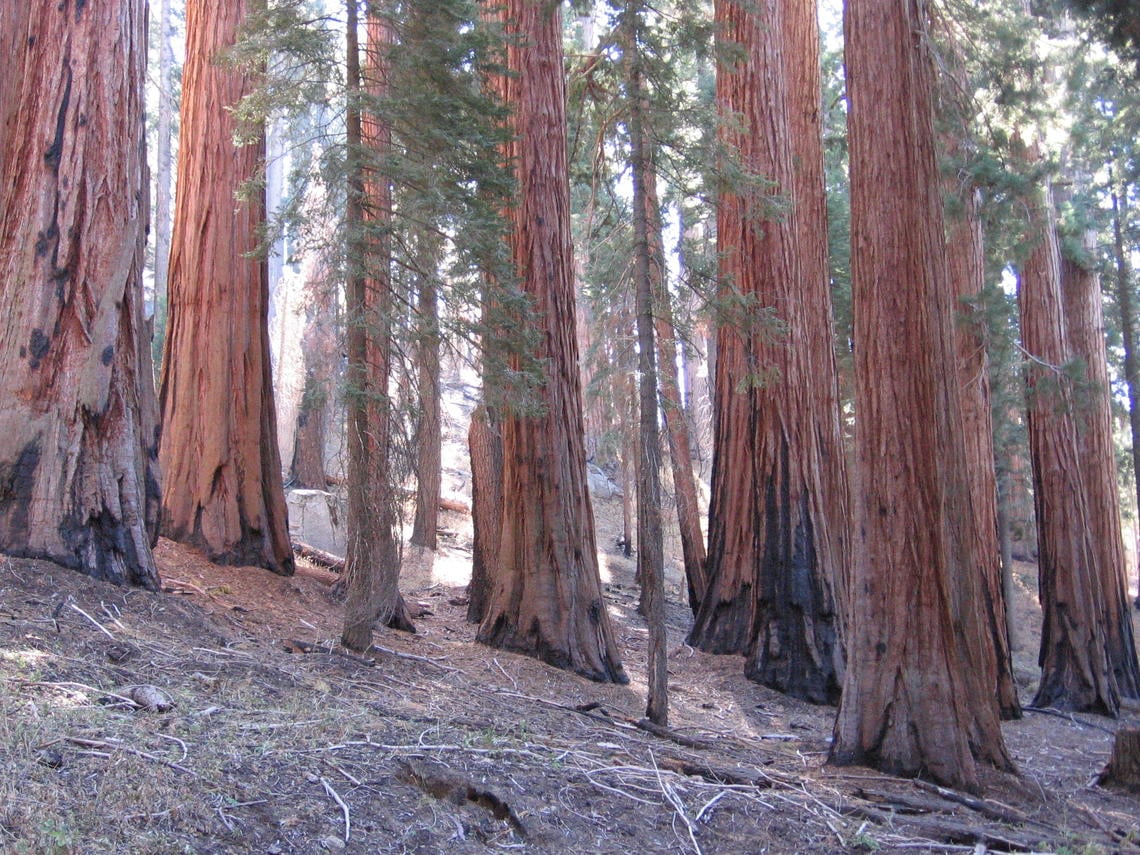

These trees are highly adapted to periodic forest fires, and can heal from serious injuries even if their thick bark fails to protect the live tissue under their bark layer.
What are Monarch Trees?
The largest trees in a giant sequoia grove are known as monarchs. They are well suited to this regal name- these large trees nurture one another and promote the health of the old growth forest around them.
Extensive logging has reduced the number of giant sequoias in California and impacted old growth stands that offer the most resilience against the effects of climate change.
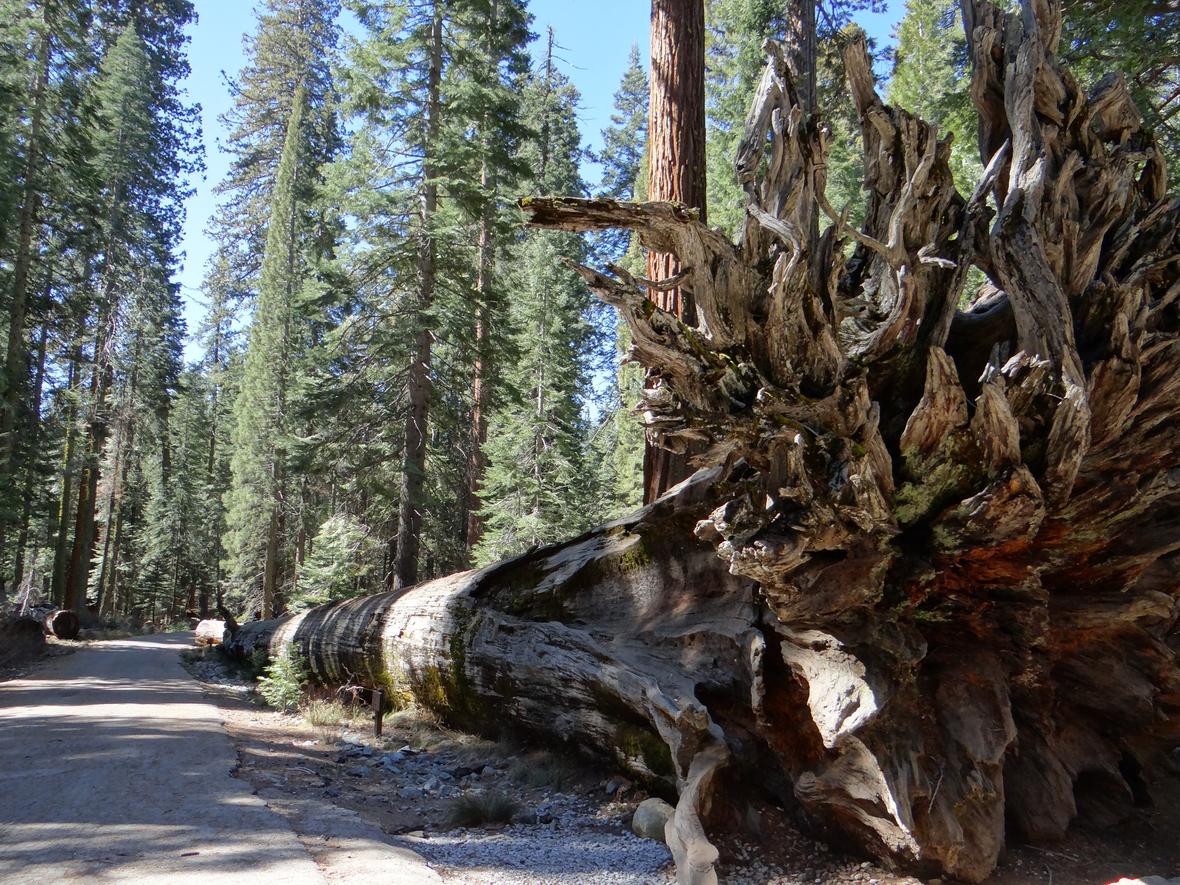

The natural cycle of forest fires in the giant sequoia forests
The Giant Sequoias’ thick bark layer and height allow these trees to be incredibly well adapted to the natural cycle of forest fires that typicallly affect the Sierra Nevada at intervals of 6-35 years in the past.
While forest fires have mostly been viewed as negative events in the United States , they are a natural occurrence and are highly important to the growth and survival of multiple species, including giant sequoias.
A forest fire clears away competing undergrowth and establishes a base of mineral soil that giant sequoia seeds need to thrive.
Using Fire to Germinate
Giant sequoia seeds remain in closed cones for up to 20 years until the heat of the fire dries them out, allowing the cones to open and seeds to fall to the forest floor.
While 98% of giant sequoia seeds won’t germinate, the 2% that do allow for the continuation of this species. More miraculously; each giant sequoia seed is the size of a grain of oatmeal.
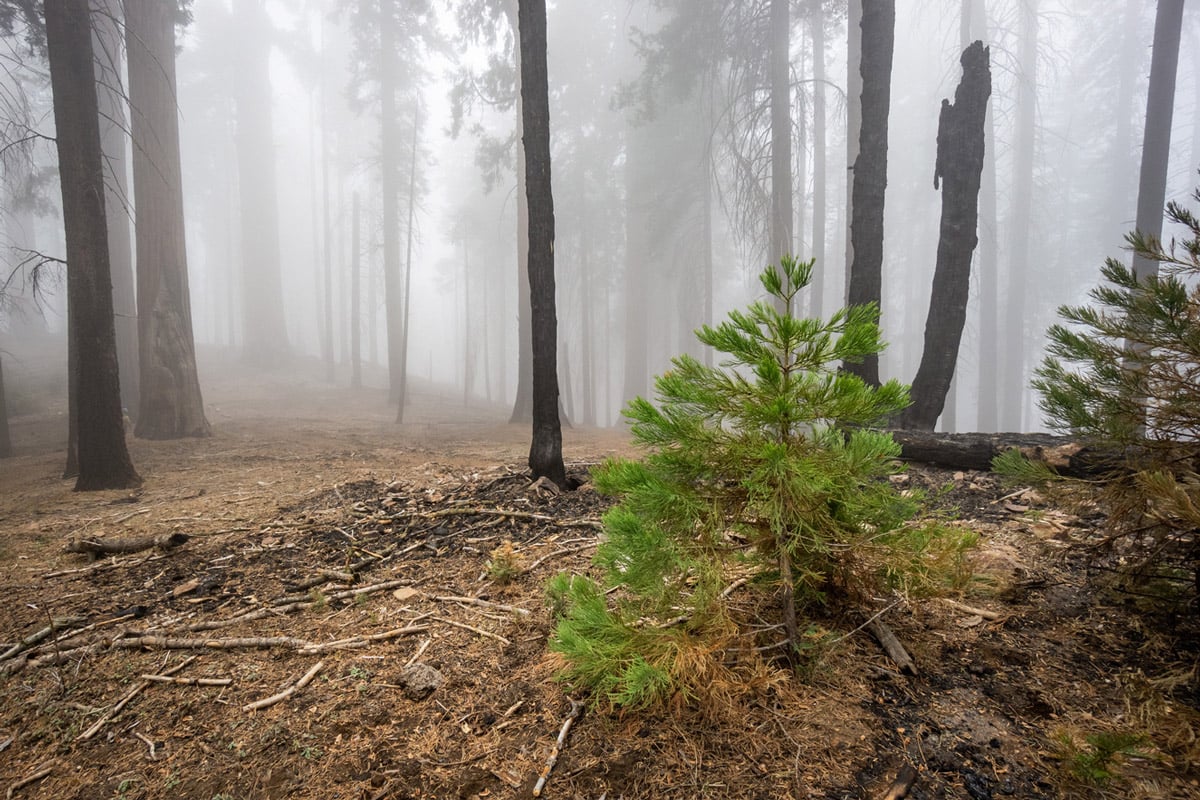

The effect of climate change and forest suppression on giant sequoia trees
Indigenous fire practices and current prescribed burning methods have been shown to be effective ways of managing forest environments to promote the health of the ecosystem.
Logging and forest management practices have suppressed the forests’ natural fire patterns, causing a buildup of dead trees and other brush that provides fuel for the fires that do still sweep through the groves.
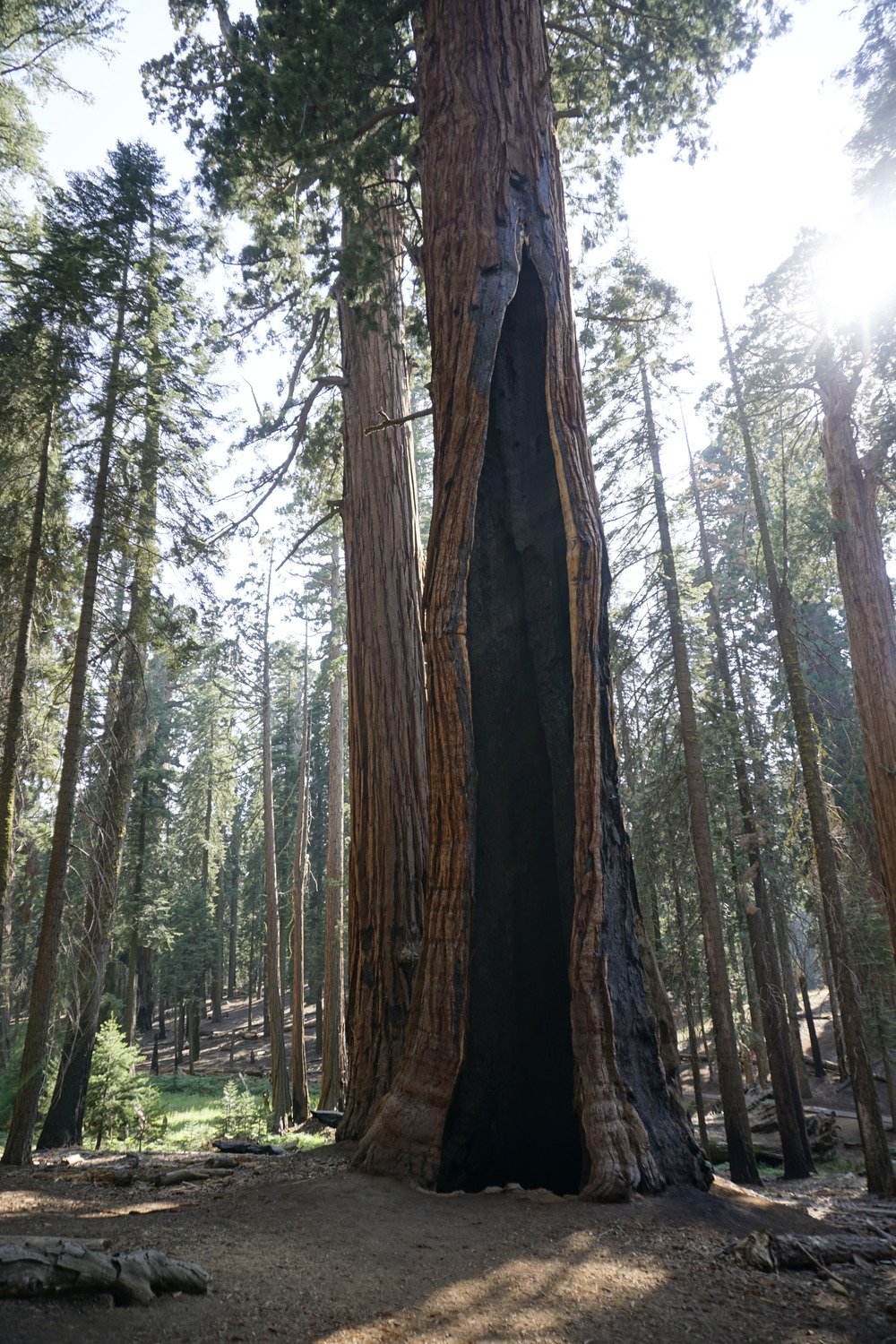

Climate Change is Causing Wildfires to Burn Hotter and Longer
Climate change is having an adverse effect on giant sequoia forests. The extra fuel on the forest floor combined with droughts and climate change are causing some forest fires to burn hotter and longer.
Fire is crucial for the growth of giant sequoias, but recent changes, like fire suppression and climate change, have caused unusually intense and large fires. These mega-fires have killed a significant portion (13%-19%) of the world’s giant sequoias, and there’s uncertainty about whether these affected areas can naturally recover.
Scientists from the USGS studied four groves in Sequoia and Kings Canyon National Parks that were severely impacted by wildfires in 2020 and 2021. Published in the journal Ecosphere in 2024, the authors of the study reported that in areas where the fires were extremely intense, the number of young sequoias is much lower than expected, which puts these groves at risk of shrinking. If the natural regeneration of sequoias fails, these groves might lose large areas of sequoia trees.
In the Alder Creek grove, numerous giant sequoias were killed by the heat of the fire. In this grove, only two giant sequoia seedlings have been found, causing concerns over the grove’s ability to regenerate new giant sequoias as the mature trees die off.
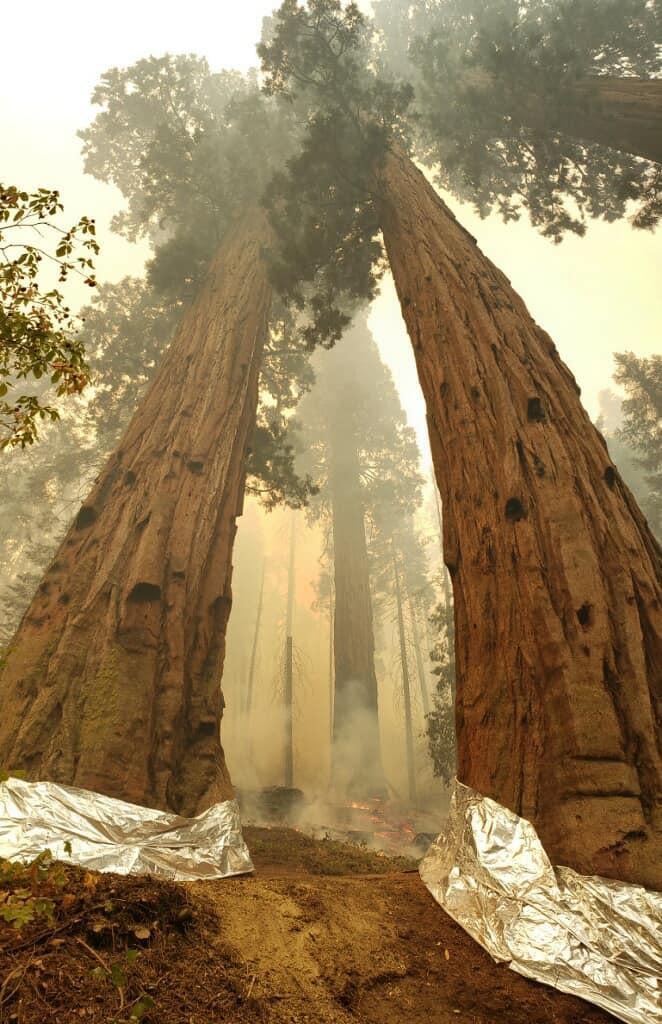

The Castle Creek fire also damaged giant sequoias, but burned at a lower temperature than the Alder Creek grove fire did. In the groves affected by the Castle Creek fire, environmental managers are finding hundreds of new seedlings that have sprouted in the wake of the flames.
The drought and fires that have scorched the Sierra Nevada over the last few years have killed an estimated 10,600 giant sequoias, or approximately 14% of the entire population. These numbers are based on early estimates, and the total number of giant sequoias affected by recent fires may be much higher.
An important source of carbon storage
Giant sequoias have adapted to a variety of climate conditions in the past, but the current pace of climate change may be their toughest challenge yet. Due to their long-lived nature, giant sequoias are massively important for carbon storage.
Old growth forests are one of our most important tools in the effort to combat climate change; forest fires and logging release this carbon back into the atmosphere.
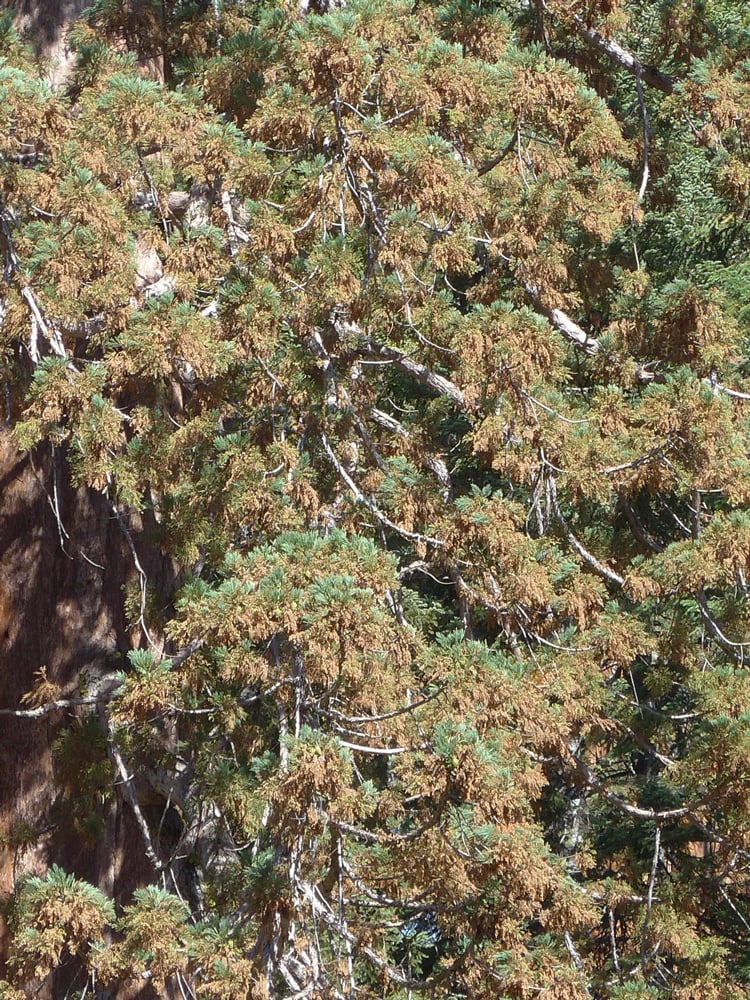

Droughts, heat waves, and other environmental conditions exacerbated by climate change can increase the amount of stress that giant sequoias and other trees face, making them more susceptible to infections and bark beetle infestations.
Climate has influenced where giant sequoias have been found in the past, and the future is no different. The coming decades will be hotter, more fire-prone, and giant sequoias may have difficulty adapting to new constraints on where they can grow.
Related: How Climate Change is Affecting the Forests of the Sierra Nevada
Giant sequoias in the United Kingdom
Once place most people don’t expect to see giant sequoias growing is the United Kingdom (UK). Redwood trees were introduced into the UK in the mid-1800s. It’s estimated that there are over half a million coastal redwoods and giant sequoias growing in the UK — far more than the roughly 80,000 giant seuqoias that grow natively in California. Until recently, little was known about how well they grow and absorb carbon in the UK climate.
The role of giant sequoias in carbon storage in the United Kingdom
Led by a geography professor from University College London, a team of researchers used advanced laser scanning to measure 97 giant sequoias at three different sites to estimate their biomass (total weight) and how much carbon they absorb each year.
Published in Royal Society Open Science in 2024, results of the study show that UK-grown sequoias can absorb carbon at a rate of 85 kg per year, depending on factors like climate, management, and tree age. The study also developed new models specific to the UK to estimate the biomass of these trees more accurately. This research provides the first estimate of how giant sequoias in the UK grow and store carbon, offering a baseline for understanding their long-term carbon sequestration potential.
Preserving giant sequoia trees
While much climate news is indeed dire, not all hope is lost for the giants of the forest. Groundbreaking partnerships are being made between local tribes, nonprofits, universities, and state and federal agencies that are working together to identify giant sequoia groves that are the most at risk from climate change and forest fires.
These partnerships are working to protect the vital old growth forests where the giant sequoias already are to prevent their loss, in addition to considering how to plan for the future.
Preserving the remaining giant sequoias is of the utmost importance, not only because of the rarity of these trees in the world, but because of the awe they inspire in all those who have the honor of witnessing them while they are still here.
References
Holland, R., Castro, G., Chavana-Bryant, C., Levy, R., Moat, J., Robson, T., … & Disney, M. (2024). Giant sequoia (Sequoiadendron giganteum) in the UK: carbon storage potential and growth rates. Royal Society Open Science, 11(3), 230603.
Szalay, Jessie. (May 4, 2017). Giant Sequoias and Redwoods: The Largest and Tallest Trees. Live Science.
Soderberg, D. N., Das, A. J., Stephenson, N. L., Meyer, M. D., Brigham, C. A., & Flickinger, J. (2024). Assessing giant sequoia mortality and regeneration following high‐severity wildfire. Ecosphere, 15(3), e4789. DOI: /10.1002/ecs2.4789.
Sommer, Lauren. “A Single Fire Killed Thousands of Sequoias. Scientists are Racing to Save the Rest.” NPR. 17 September, 2021.
“Sequoia and King’s Canyon Park Hosted 1.2 Million Visitors in 2020.” National Park Service. Accessed 13 October, 2021. www.nps.gov/seki/learn/news/sequoia-and-kings-canyon-national-parks-hosted-1-2-million-visitors-in-2020-35-decrease-compared-to-2019.htm
This article was first published on October 14, 2021 and has since been updated.
Fonte : National Geographic














